What are Macros – Keto Diet 101
One of the most confusing things for someone new to the ketogenic lifestyle is figuring out their macros on keto. The internet has no shortage of advice on this matter, and there is a ton of conflicting information out there.
So…who do you trust?
I’ve spent the last 2 years asking myself that same question.
Because I wanted answers, I read a ton of literature on macros on keto and the keto diet, watched many videos and documentaries, and eventually invested in a course to obtain my Keto Coach Certification.
I became fascinated with the science behind the keto diet, and as a result, my understanding and methodology of the keto diet have greatly evolved in the last two years.
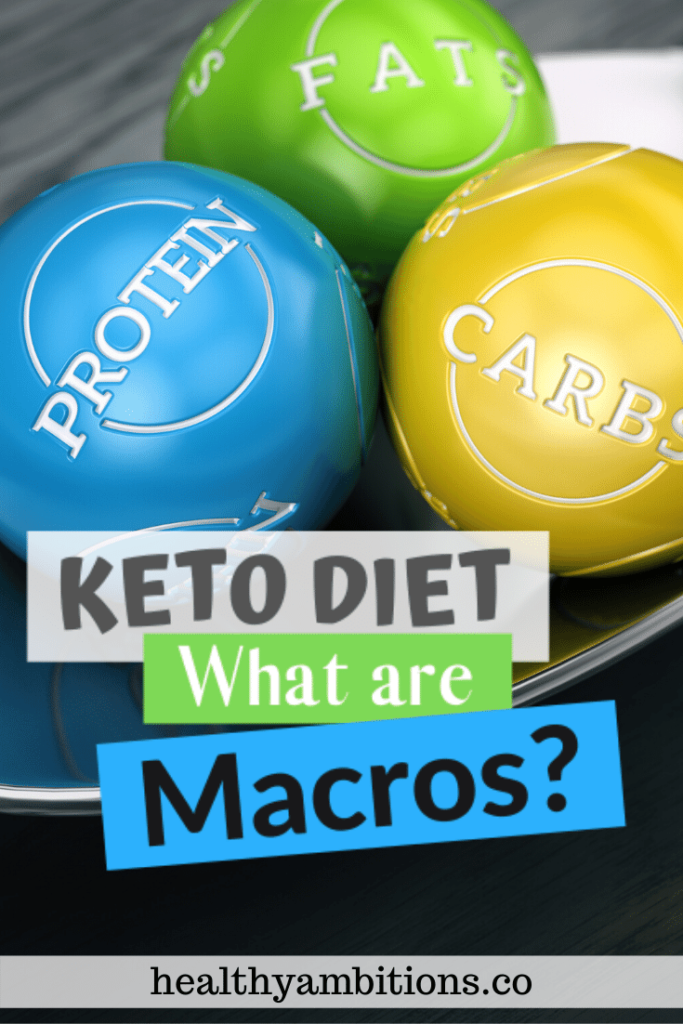
This post may contain affiliate links, which helps keep this content free. Please read our disclosure for more info.
What is Keto
Ketosis happens when you remove enough carbs to force your body into a state where’s it’s burning fat instead of glucose for fuel.
Many people confuse the purpose of ketones for fuel with fat for fuel.
Fat by itself is a fuel source for most of your body functions, not ketones. And fat is used for fuel in the body in the absence of glucose.
Organs such as your brain, heart, and other muscle tissues can use ketones for fuel. Your body will take fat, either dietary or from your own body fat, to produce ketones on demand in the absence of glucose.
Achieving a ketogenic state means you are using very little glucose. You will never reach a state of zero glucose because you still need a small amount of glucose to run your body, even when you are fully in a ketogenic state.
But the cool thing is, the glucose doesn’t need to come from dietary carbs! The body is an amazing machine!
Your liver creates glucose through a process called gluconeogenesis for those necessary glucose functions. This is another on-demand function that happens in the absence of dietary carbs.
The keto diet is not a new concept, nor is it a fad diet. It’s part of human metabolism.
Take a newborn baby. Soon after birth, the baby is in a ketogenic state and will remain so while breastfeeding. Babies use ketones and fat for energy and brain growth.
“When the brain is in its period of highest growth, and when the source of food is likely to be close to what it evolved to be for that period, ketones are used to fuel that growth.” ~ Ketogenic.Org
There is no debate that breastfeeding, when it’s possible, is best for a baby’s overall development and health. So why do dietary guidelines push us to transition babies from a ketogenic diet to a high carb diet, feeding them cereal? Think about that one for a minute.
What are Macros?
When adopting a ketogenic lifestyle, it’s best to track your macros to ensure you are getting the proper ratios. But what exactly is a macro?
Macro is short for macronutrients.
The nutrients we need can be divided into two categories. Macronutrients and Micronutrients.
Macronutrients are those nutrients that the body needs in large amounts. The three macronutrients are Carbohydrates, Fat, and Protein.
Micronutrients are the nutrients that your body needs in small amounts. These include vitamins and minerals.
Let’s take a closer look at each of the three Macronutrients.
Related: Learn more about the different variations of the keto diet.
Carbohydrates
Carbohydrates are simple sugars linked together in long chains. The keyword here is sugar. Carbs are in fact sugar!
We don’t think of wheat and potatoes as full of sugar. But since they are full of carbs, they are in fact full of sugar.
And when you consume these high-carbohydrate foods, you flood your body with glucose (a.k.a. sugar) as soon as the long chains break down into simple sugars.
Sure, your body can easily use glucose for fuel. But the problem is, our body’s storage capacity for glucose is quite limited.
Most people can store about 300-400 grams of glucose in their muscles, and another 60-90 grams in their liver.
What happens when your body has enough glucose for fuel but runs out of storage capacity for the excess glucose?
Well, your body converts the excess glucose into fat to be stored in your adipose cells (fat cells).
And as long as we continue to fuel our body with glucose, the body will continue to use the dietary carbohydrates for fuel and never have a need to dip into those fat cells for energy.
Related: Learn about my family’s keto diet journey.
Carbohydrates may technically be “fat-free”, but they can still end up as body fat. Crazy, huh??
Fat
Fat is another fuel source for the body. But, if we are trying to keep our body from storing fat, isn’t eating fat counterproductive?
It certainly seems like that would be the case, and was probably the driving factor of the fat-free push of the late 1970s and 1980s.
The medical and food industries deemed dietary fat “BAD” and encouraged everyone to adopt a low-fat, high-carb diet.
If we look at the growing waistline of America, I think we can all agree this model has failed us.
In fact, I’d call it an EPIC FAIL!
The real truth is that your body needs healthy fats and cholesterol to function properly. We need fat to produce healthy hormones.
When we greatly reduce or eliminate carbs from our diet, our body transitions into a fat-burning machine.
Here are just a few ways our bodies use fat.
- Fuel for energy
- Healthy hormone production
- Absorb and store fat-soluble vitamins
- Act as messengers to help proteins do their job
- Protect your organs
As you can see, fat is as important to our health as drinking water. It’s a necessary component of our diet.
If you are worried about high-cholesterol, think about this one thing for a moment. The average person’s body produces about 75% of its own cholesterol. Only 25% is made up of dietary cholesterol.
Your liver will adjust cholesterol production based on your body’s needs. Cholesterol is not the bad guy. Your body desperately needs cholesterol to function properly.
To learn more about how cholesterol works in the body, check out this video on YouTube.
Dave Feldman – ‘Cholesterol is a Passenger, Not a Driver’
Now, back to fat.
It takes a while to become fat-adapted, about 4-6 weeks. Fat-adapted means your body is fully transitioned from using glucose for its primary fuel source to fat.
Your body has a near endless storage capacity for fat. That means it has a near limitless fuel source too!
Related: Want to convince your family to go keto? Read this!
The amount of fat you consume on a ketogenic diet will depend on your goals. Less fat for weight loss (NOT fat-free) and more fat for maintenance and healing.
Protein
Protein is an essential macronutrient. Your body uses protein as the building block for bones, muscles, blood, skin, and cartilage.
Eating too little protein can cause many issues.
- Decrease in lean muscle mass
- Fatty liver
- Skin, hair, and nail problems.
- Weakened bones
- Impaired immune system
The keto diet is not a “high-protein” diet, but you do have a minimum goal to meet. A good goal to shoot for is 0.8 times your lean muscle mass.
For example, if you way 150 lbs., and have 30% body fat, your lean muscle mass is 105 lbs.
105 x 0.8 = 84 grams of protein per day. This is your goal, every day. But it’s better to be a little high on protein than too low.
How to Calculate Your Macros
How you calculate your macros will depend on your goals. Someone whose goal is weight loss does not want to consume as much fat as someone who is maintaining their weight, healing their body, or trying to bulk up.
This is one area where the keto community can be divided. Traditionally, the keto macros are broken down like this.
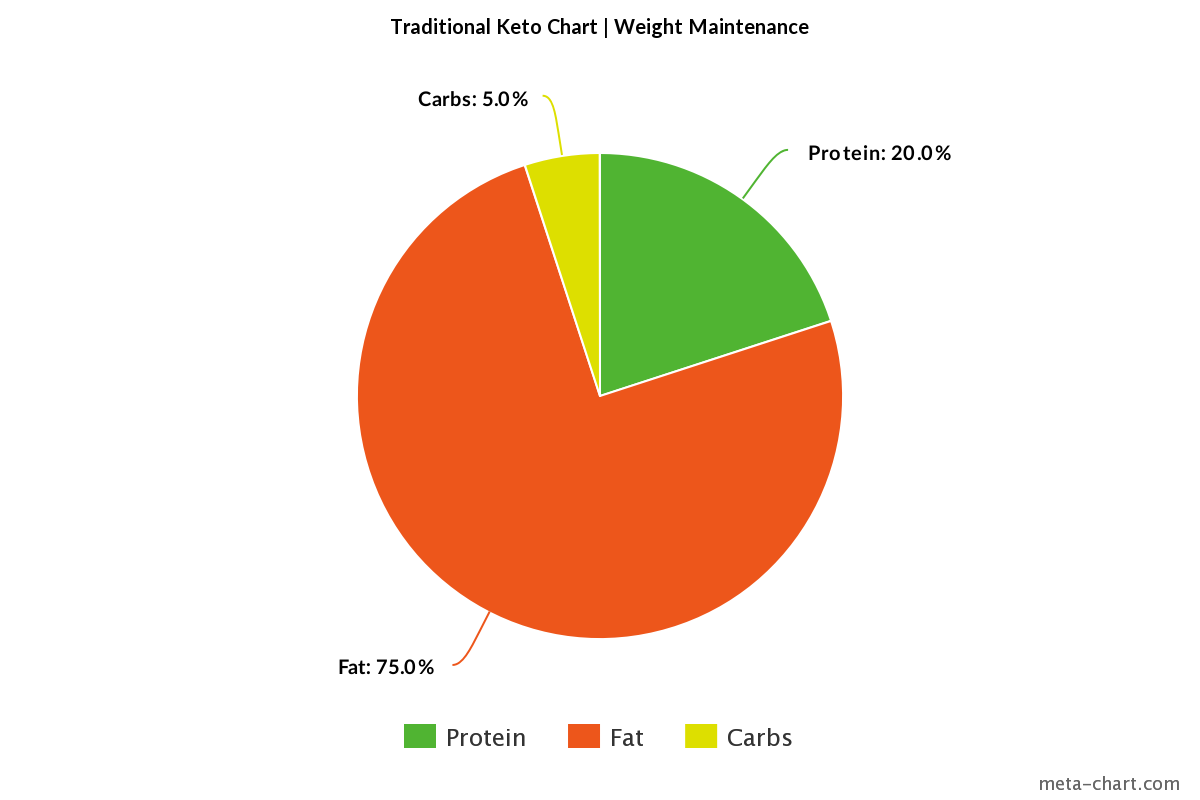
I was part of a group in my early keto days that preached your fat macro as a goal! You had to meet your fat requirements to lose weight!
Even at the time, that didn’t make logical sense to me. However, many people were claiming success. And let’s face it. Having permission to ADD more fat to my diet (heavy cream, butter, etc.…) is enticing!
Bring on the fat bombs! And boy did I enjoy some fat bombs too!
This “hit your fat goal” method even worked in the beginning. I was losing weight…initially.
But then it stalled, and I even started gaining some of the weight back.
All the extra added fat was working against me. Don’t get me wrong. Fat is good. Fat is essential. We need fat for healthy hormones.
BUT, when you are trying to lose weight, eating too much fat will sabotage your overall weight loss goals. Your body will burn dietary fat before using body fat simply because it’s easier to access.
When you lower your fat intake, and your body burns through the dietary fat, it will take fat that has been stored in the body for fuel.
Here’s an updated chart showing the breakdown of macros, including your own body fat.
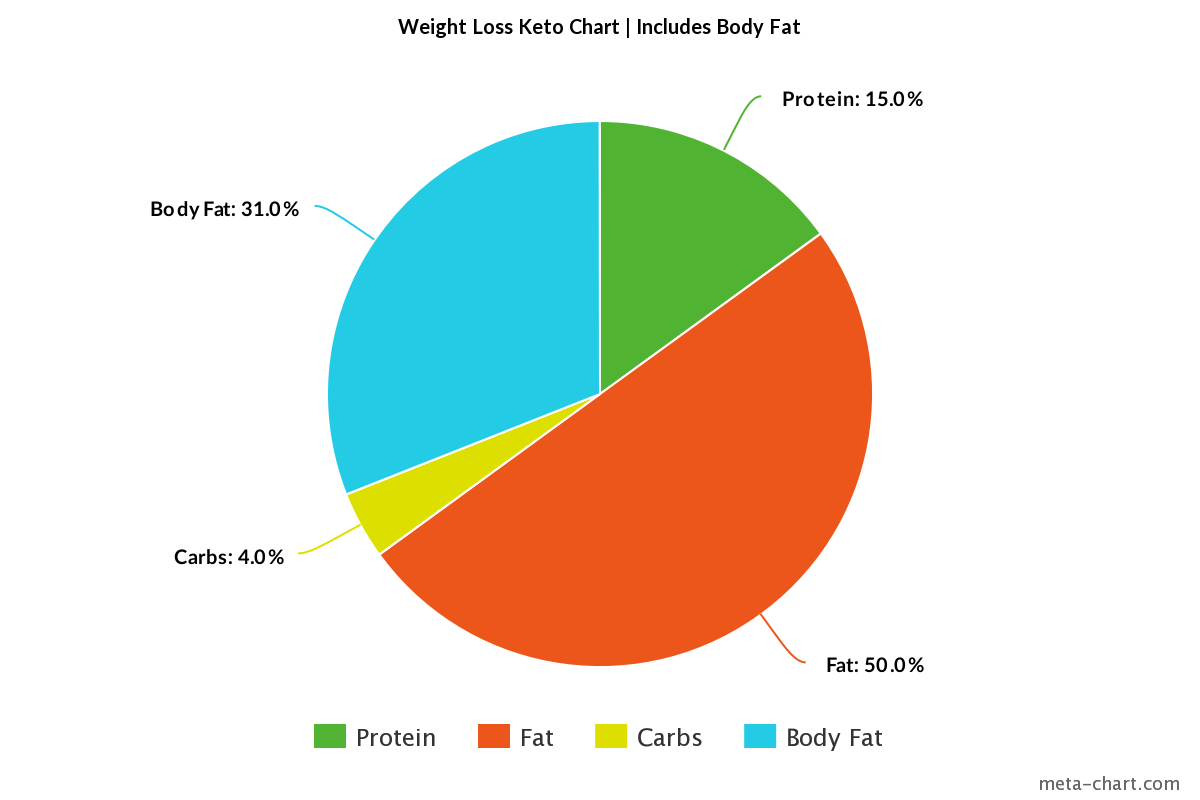
A well-formulated keto diet has very low carbs, moderate protein, and higher fat – not lots and lots of fat. And the amount of fat depends on your goals.
Well-Formulated Keto Diet
You can achieve a level of ketosis, yet still, be very unhealthy. We call this “dirty-keto”. It may help you reach your weight loss goals, but you will do nothing to heal your body.
A well-formulated keto diet will not only put you into ketosis but also provide your body with all the essential vitamins and nutrients while eliminating chemicals and inflammatory foods.
Believe it or not, meat on its own can be very nutritious. In fact, beef has more nutrients than most vegetables. If you aren’t a huge fan of vegetables, you might even want to check out the Carnivore Diet!
Craig and Maria Emmerich recently released their Carnivore Diet Cookbook which includes all the science behind the carnivore diet and why it can go a long way towards improving your overall health.
Related: Read my keto pantry staples to stay on track.
Foods to avoid on Keto:
- No Sugar – you can still use Stevia if you want to sweeten your coffee or tea
- No Grains – no wheat, oats, rice, barley, quinoa, corn, etc….
- No Starchy Veggies – no potatoes, corn (it’s considered both a grain and a vegetable), sweet peas, beans, carrots, yam, winter squash, etc.…
- No Fruits with the exception of berries and avocado in moderation
- Soy is known to be estrogenic, causing estrogen dominance and should be voided
- Chemical / Artificial Ingredients – if the food comes with a label, READ THE LABEL.
Foods you can eat on Keto:
- ALL Meat is fine and encouraged (if the meat is processed, like sausage, check the ingredients)
- Healthy Fats (animal fat, real butter, olive oil, coconut oil, and avocado oil)
- Dairy is fine in moderation, except milk (hard cheeses, cream cheese, heavy cream, half ‘n half, butter) If you want Yogurt, look for the “Two Good” brand because it’s very low in carbs.
- Low Carb Veggies are good in moderation, but even the carbs in low carb veggies add up quickly. ideally, keep your veggies to above-ground veggies such as leafy greens, Brussels, asparagus, cucumbers, broccoli, cauliflower, yellow squash, zucchini (onions and tomatoes should be used sparingly)
- Low Carb Fruits – Avocados and berries is pretty much all you get
- Nuts – almonds, pecans, walnut, macadamia, etc.…All nuts should be eaten in moderation and you should avoid peanuts if you want to reduce inflammation
- Low Carb Sweeteners – erythritol, stevia, monk fruit, allulose, etc.…If you have pets, stay away from Xylitol.
I know it seems like keto takes all the fun out of food, but with a few ingredient swaps, you can still eat yummy foods like ice-cream, pizza, cake, and even a hamburger WITH a bun.
Keto Diet for Beginners: 8 Comfort Food Swaps
3 Stages of becoming Keto-Adapted
Stage 1
In the first 2-3 days, your body will begin burning fat and producing ketones in the absence of carbohydrates.
The Keto Flu hits most individuals sometime within the first 1-3 weeks. Some people really struggle with this phase and can experience flu-like symptoms (hence the name) and others barely notice a change.
I believe the diet one has before keto plays a big role in the level of keto-flu symptoms one experiences. The crappier the diet before keto, the more your body must detox from chemicals, sugar, and carbs.
Stage 2
Your body takes between 4-6 weeks to become fat-adapted, assuming you did not have any carb-ups during this time. The more you cheat on keto, the longer it will take to reach Stage 2.
When you become fat-adapted, you will notice a significant increase in energy. Almost as if you drank an energy drink, but without all the jitteriness. And, there is no “crash”!
Seriously, when I first hit this stage, I couldn’t sit still. My house was never so clean! For me, this big surge of energy eventually leveled out, but never back down to the sluggish levels of my pre-keto days.
I no longer feel like I need a nap every afternoon, and I have great energy throughout the day!
Stage 3
This is the stage that few people reach, but for those that do, they see some amazing health benefits.
People who commit to keto long term, more than 1-2 years have reported these kinds of results.
- Reversed Type 2 Diabetes
- Decrease in auto-immune symptoms
- Conquered food addictions
- Overcame infertility issues
- Improved mental state (anxiety and depression improved)
- Reduced or completely eliminated medications
- And SO MUCH MORE!
Many people view keto as a short-term solution for weight loss. But those who choose Keto-for-Life are reaping the health benefits that go way beyond weight loss.


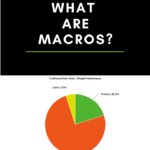
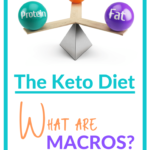


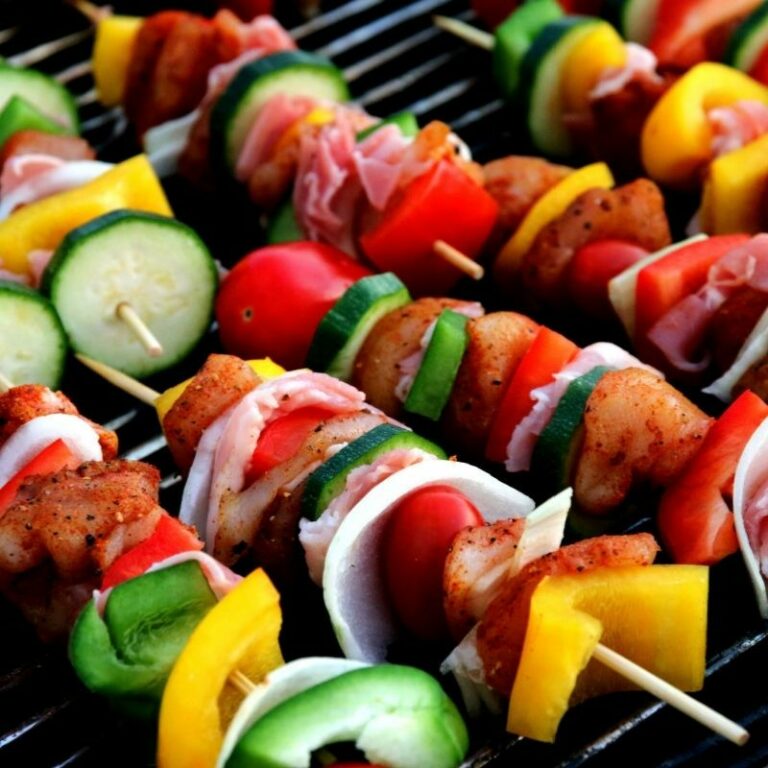


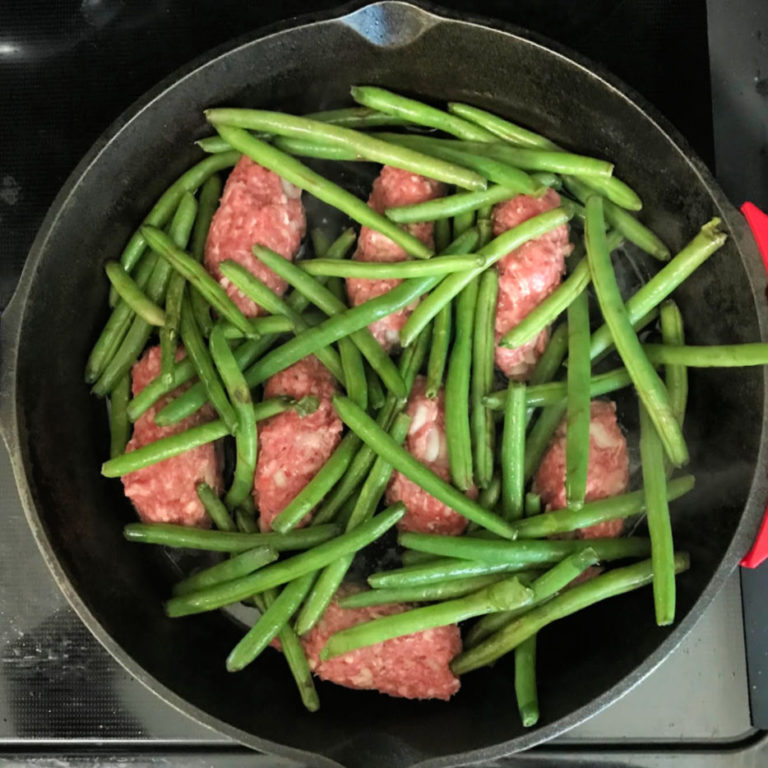
This information is very interesting, but how do I actually calculate my macros?
Thanks!
Thank you Cathy!
I can do this with these guides.
You are so welcome!